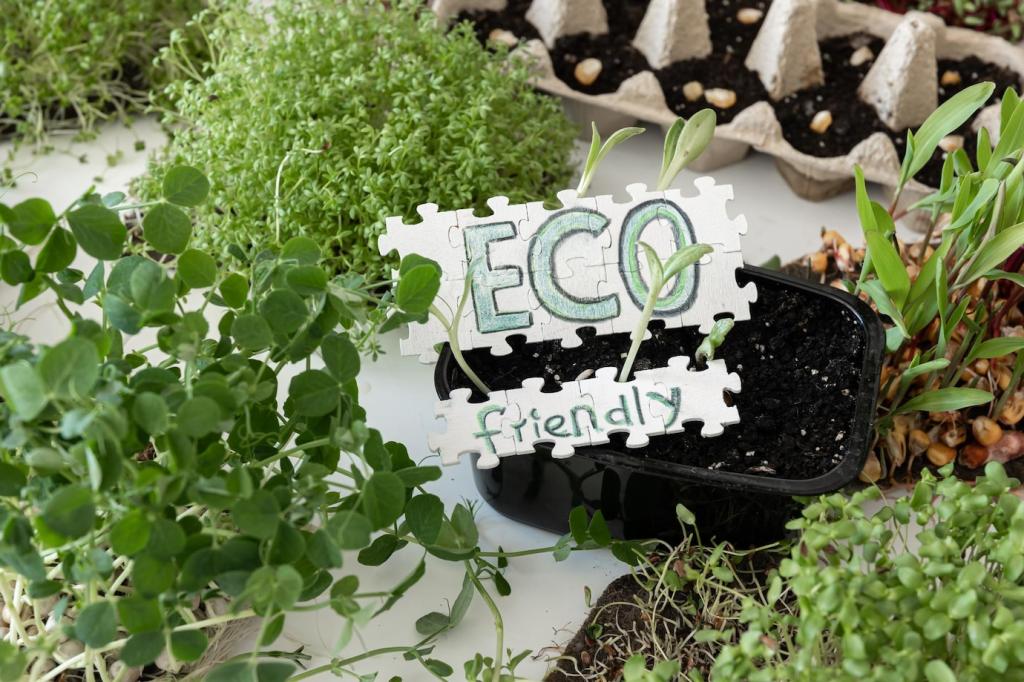
Biodegradable Alternatives for Furniture Care: Gentle, Effective, Earth‑Kind
Today’s chosen theme: Biodegradable Alternatives for Furniture Care. Explore planet-friendly polishes, cleaners, tools, and routines that protect beloved pieces while respecting waterways, indoor air quality, and the well-being of future generations. Join the conversation and share your eco-smart care wins.
Why Biodegradable Matters for Furniture Care
Many mainstream polishes rely on silicones and petroleum distillates that leave persistent films, emit VOCs, and complicate refinishing. Overspray and rinsate can travel into drains, where residues stress aquatic life. Biodegradable alternatives reduce indoor emissions, minimize long-lived residues, and keep future maintenance straightforward and safe.


Why Biodegradable Matters for Furniture Care
A product labeled biodegradable should break down into simpler, non-harmful substances under natural conditions. Look for “readily biodegradable” claims aligned with standards like OECD 301. Remember, biodegradable does not guarantee “safe at any dose.” Use correctly, dilute wisely, and always patch-test delicate finishes before full application.

Castile soap: the go-to green cleaner
Mix one teaspoon of liquid Castile soap into 500 milliliters of warm distilled water. Lightly dampen a cotton cloth, wipe with the grain, follow with a water-only pass, and dry immediately. It’s gentle, biodegradable, and graywater-friendly. Share your before-and-after photos and your favorite dilution for dust-prone surfaces.
Vinegar cautions and careful use on sealed wood
A highly diluted vinegar solution (about 1:20 with water) can lift light mineral haze on some sealed finishes. Avoid on waxed, shellacked, or antique pieces. Always test discreetly, wipe with plain water afterward, and dry thoroughly. When unsure, skip acids and choose a mild soap solution to stay safe.
Deodorizing naturally without abrasion
Tuck breathable sachets of baking soda, fresh coffee grounds, or cedar shavings into drawers to absorb odors without scratching surfaces. For musty cabinets, leave a small open bowl overnight, then ventilate. Never scrub varnish with powders; let time, airflow, and gentle absorbents do the work. Share your favorite natural deodorizers.
Tools and Textiles That Return to the Earth
Pick tightly woven cotton or hemp cloths that release dust well and launder easily. They’re durable, biodegradable, and avoid microfiber shedding. Retire worn cloths to shop-rag duty before composting if uncontaminated. Tell us whether you prefer vintage cotton tees, lint-free diaper cloths, or sturdy hemp blends for buffing.
Protecting Finishes Without Harsh Chemicals
Use coasters, wool felt pads beneath lamps, and cork trivets under warm dishes. Rotate decorative items to prevent sun-shadowing, and add a thin wax film where hands rest. These low-tech habits reduce cleaning frequency and chemical use. What tiny change saved your tabletop this month? Share it with us.
Lifecycle Thinking and Labels

Look for phrases like “readily biodegradable (OECD 301),” “USDA Certified Biobased,” or “EU Ecolabel.” Scan Safety Data Sheets for petroleum distillates, high-VOC solvents, or silicone additives. Short, understandable ingredient lists usually signal thoughtful formulation. Have a confusing label? Drop it in the comments and we’ll help translate together.
Community and Habit-Building for Greener Care
01
Share your routine and inspire others
What’s your weekly dusting mix and monthly waxing rhythm? Post your steps, tools, and favorite biodegradable products in the comments. Subscribe for our seasonal checklists, and we’ll feature thoughtful routines from readers who turn small, consistent habits into beautifully preserved furniture and lighter household footprints.
02
Traditions that turn maintenance into meaning
One reader inherited a pine chest and made hand-buffing a mindful Sunday practice. She counts strokes, listens for the soft wax squeak, and notes the evolving sheen. Over time, care became connection. Share your story, too—how has biodegradable care changed the way you relate to your spaces and heirlooms?
03
Local sourcing and circular creativity
Find beeswax from neighborhood beekeepers, citrus-peel infusions from kitchen scraps, and community jar-return programs. Borrow a double boiler, swap cloth offcuts, and teach a friend your favorite eco polish. Tag your projects so we can celebrate together, and help your town grow a circular culture around cherished furniture.
